Infinite Injustice: Why it’s Impossible to #RestoretheSnyderVerse
The hidden stories of the battle for control over Justice League, Ray Fisher’s fight for justice, and the limits as to what hashtag campaigns can accomplish.
(Contains full spoilers for Batman V. Superman: Dawn of Justice and Zack Snyder’s Justice League)
The theatrical release of Justice League was on November 17, 2017. A lifetime ago. The movie passed by without my comment until the end of 2019, when a different movie from a different franchise brought a familiar sensation of disappointment upon unfurling as a “corporate course correction.” In 2019, the hollow and empty Star Wars: The Rise of Skywalker was such a disappointment it haunted me with echoes of the butchered Frankenstein’s Monster that was Joss Whedon’s Justice League. But while the Star Wars film was a clear course correction from its conception, it would take years for fans and press to work out the true behind-the-scenes story of the fight that led Warner Brothers Studios to create their strange first DC Comics super-hero team-up adaptation.
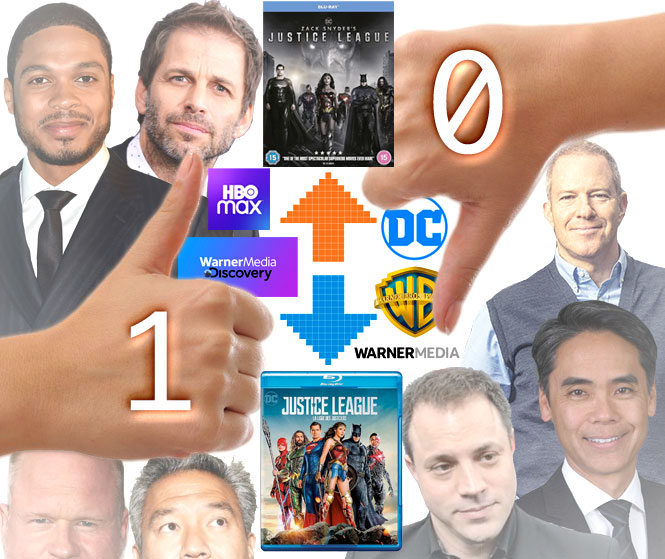
Hello from within the Venn diagram in the subset of moviegoers who enjoyed Batman V Superman: Dawn of Justice as well as Star Wars: The Last Jedi. I liked those movies despite their flaws, particularly the Ultimate Edition of the former. Neither movie was perfect; neither was universally well-received; neither was free from the influence of the audience response to the series movie before it. But both movies were brave in the risks they took with the subject matter; both movies were box-office achievers that could not realistically be labeled as bombs; most importantly, both movies gave rise to a seemingly equal yet opposite chorus of internet outrage that eventually spooked the studios into fucking up their follow-ups, Big Time.
But unlike Star Wars fans, those of us who were hoping to see a proper follow-up to Batman V Superman: Dawn of Justice: The Ultimate Edition eventually got our wish in the release of Zack Snyder’s Justice League. DC fans have long since had to accept the dominance of the Marvel Cinematic Universe as supreme in the box office between the two comic publisher’s adaptations. They’ve had to watch Warner Brothers waffle on leadership for the project, on tone for the movies, and even suggest that the studio is not even committed to the idea of a running story-line and an interconnected universe, while in the midst of producing one. When moviegoers turned up for the 2017 release of Justice League after so much behind-the-scenes turmoil, the final product showed clear indications of re-direction by Joss Whedon (who was hired to complete Zack Snyder’s work on the film after Snyder left due to the death by suicide of his daughter), and little sign of the tone of the clearly-deposed original director or the story-line of the films that came before it.
When discussing the DC Universe films with my wife, who came in unfamiliar with most of the characters, her question is: why didn’t they introduce each of these heroes with their own movie? That’s the question, isn’t it?
So began the years-long and ultimately successful #ReleasetheSnyderCut campaign; chaotic, unruly, sometimes bullying, governed by the non-existent membership rules of loose association of hashtag, bathed in the efforts of lots of good people who raised over half a million dollars for the American Foundation for Suicide Prevention, and born in response to the injustice of the theatrical release of Justice League. Since 2018, Zack Snyder fans were loud and insistent in their demand for the better version of the movie that they knew existed, and were encouraged by social media leaks from the movie’s original director and, eventually on Nov. 17, 2019, a chorus of support from its cast. DC fans had long been disappointed with the rushed introduction of so many of their favorite heroes. Industry figures were dismayed to watch a studio completely re-engineer a film behind the back of a director distracted by personal tragedy and release it in the form they wanted with his name still across the marquee.
It worked. The day after the movie’s cast chimed in for the campaign over Twitter, on Nov. 18, 2019 the production team of Zack and Deborah Snyder got the call (via their agent) from Warner Brothers Studios Chief Toby Emmerich regarding interest in releasing the Snyder Cut on the streaming service HBO Max, as detailed in an interview with Deborah Snyder by the Hollywood Reporter. In March 2021 the studio would release Zack Snyder’s Justice League, a nearly four hour cut of the movie with all of Snyder’s original footage, none of Joss Whedon’s re-shot footage, and an additional $70 million thrown in to the project to complete the effects work and finish the original vision of the film… along with a few additions.
Online consensus is now clear: it is a better movie. The injustice has been reversed: fans got to see Zack Snyder’s vision for the film.
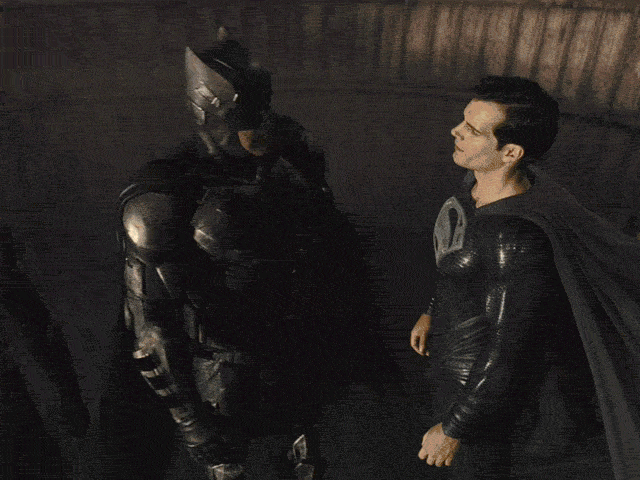
Now some fans of the Snyder Cut have begun to campaign for the extended DC story-line originally envisioned by the director, using the hashtag #RestoretheSnyderVerse. It’s very easy to understand people wanting to go back in time, to pick up not only the DCEU serial story where it left off five years ago, but the sense of potential of a planned universe and story-line executed by a stellar cast and crew of talent assembled. But, with the time that has passed and the changes in both the people involved and the market in which these stories compete, is it even possible to #RestoretheSnyderVerse?
The Secret Origins of WB’s Cinematic DC Flinch
Why DC Comic Movie Fans Wanted WB to #ReleasetheSnyderCut
After all this time and uncertainty (especially with this past year of pandemic-related chaos in our lives), the most redemptive and satisfying thing about the release of Zack Snyder’s Justice League is that it is a proper serial follow-up to the Zack Snyder DC Cinematic Extended Universe movie before it.
The 2017 theatrical cut of Justice League as originally directed by Zack Snyder and eventually re-directed by Joss Whedon was, in retrospect, a very appropriate sequel to the theatrical release of 2016’s Batman V Superman: Dawn of Justice, from a certain point of view. In response to mandates from studio management to lower runtime, both movies had nearly all their logical connective tissue cut away, greatly hurting the audience’s interpretation of this version of the DC characters introduced. In BvS the studio hit a two and a half hour runtime of Snyder’s 3 hour Ultimate Cut for theaters by cutting away key revelations about the machinations of Lex Luthor setting these characters against each other. The 2017 theatrical release of Justice League also had so much of its connective storytelling tissue removed to hit a two hour runtime that an incredible disservice was done to the characters it was to introduce. Meanwhile, WB’s main competition in this space, the Marvel Cinematic Universe as produced by the fledgeling Marvel Studios, didn’t face these issues with their team-up movie The Avengers: all the work introducing characters had already been done.
Imagine the chagrin felt by WB management at that time for allowing the MCU’s dominance to come about, after first pioneering successful comic book to screen adaptations with both Superman and Batman. Marvel Studios had reached their steady climb to the billion-and-a-half dollar box office of The Avengers with a single serial story-line seeded through six movies, starting with the original release of Iron Man in 2008.
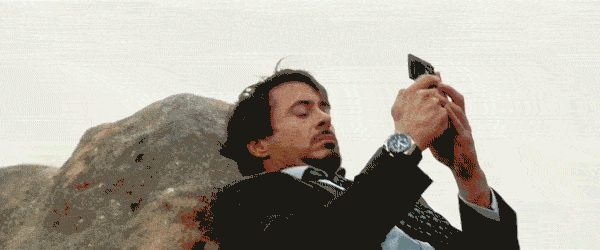
Approaching 2008, Warner Brothers was not completely unaware of the potential for adapting DC’s hero team of Justice League to the big screen. 20th Century Fox’s X-Men series of movies had already proven the box office potential of such an adaptation. An adaptation was even pursued at WB all the way up through preproduction, before being halted to prevent character crossover confusion with Christopher Nolan’s Dark Knight trilogy:
A Justice League movie almost came to pass in 2008. The project, dubbed Justice League: Mortal, would have been directed by Mad Max: Fury Road creator George Miller, but the writer’s strike that year–as well as Christopher Nolan’s desire to not have a competing version of Batman out there while he was smack dab in the middle of his Dark Knight trilogy–killed Justice League Mortal in its tracks, weeks from when filming was to begin.
Eric Diaz, Nerdist – Everything We Know About JUSTICE LEAGUE So Far – March 27, 2017
Already, very early on in this connected universe competition, Marvel Studios began embracing a serial story-line in their long-term plans, planting seeds with their refinement of the innovation of post-credit teaser scenes… something first prominently seen in comic book adaptations in Fox’s X-Men: The Last Stand. Warner Brothers, confronted more directly with the need to reconcile the same characters across the efforts of different directors, shied away instead of embracing the challenge.
At that time, Warner Brothers had nothing to regret in their decision. They were heady with profits from their successful 2008 release of The Dark Knight in Christopher Nolan’s rebooted Batman trilogy. WB of 2008 was certainly unperturbed by the threat presented by this upstart studio distributing their pictures through Paramount and pulling in modest box office compared to the billion-dollar juggernaut that was Batman that year. What’s amazing about The Dark Knight’s box office returns is that it took persistence with that rebooted universe to achieve them: 2005’s Batman Begins grossed $375 million dollars worldwide which was very modest for the franchise and gave little indication of the triple-sized haul of its follow-up.
For years, moviegoers have had the mistaken perception of Zack Snyder as some sort of guiding figure laying out the future of the DCEU, an equivalent producer figure to Kevin Feige with Marvel Studios. But his role was really much more of collaborative director/producer, and eventually a “fall guy”…
Iron Man also pulled “non-billion” return, though quite a bit more than Batman Begins, somewhere in the neighborhood of $585 million dollars. The fledgling Marvel Studios didn’t yet seem to have a magic formula however as they would work with Universal to release The Incredible Hulk that year as well, which would get squeezed out in the summer competition, grossing worldwide $265 million. Marvel would proceed with a follow-up to Iron Man and WB would of course pursue another Batman project with Nolan, but to their credit would also look to dig deeper into their DC character portfolio with 2011’s Green Lantern, a movie initially conceived as an introduction to a larger connected DC cinematic series of films.
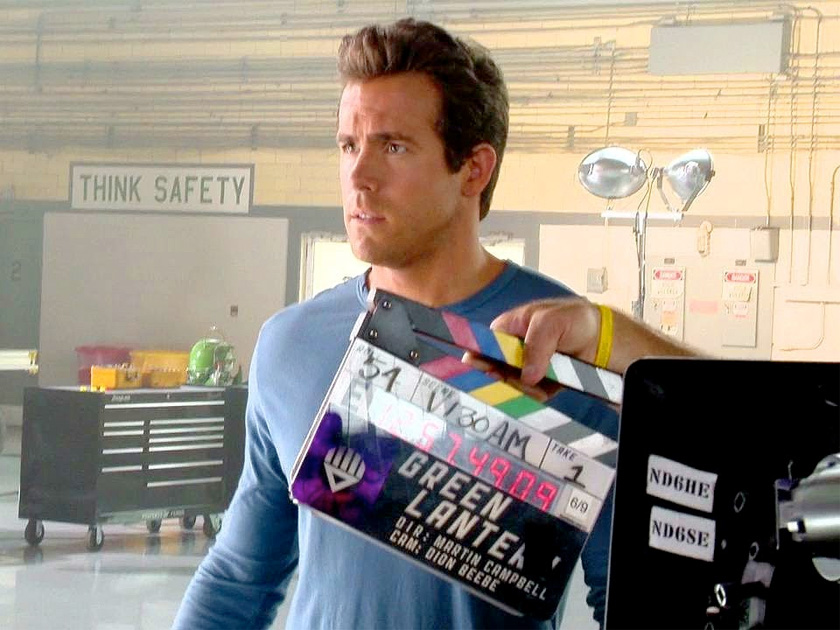
Certainly, people in general have largely forgotten a lot of the behind the scenes studio interference that movie faced. Den of Geek details a lot of these challenges in the article Green Lantern: What Went Wrong? Green Lantern was co-written and co-produced in part by Marc Guggenheim and Greg Berlanti who would eventually move on to helm the CW’s “Arrow-verse” of televised adaptations including Arrow and The Flash. Berlanti was originally slated to direct, but in 2009 Warner Brothers assigned him to another project and brought in Martin Campbell as director. WB would further push for numerous changes and adjustments:
Apparently, Campbell’s first and only choice for the lead role was Bradley Cooper, but the studio courted Reynolds for the role instead, leading to reported clashes between the director and the star on set. Insider reports about heavy-duty reshoots in January 2011, a last minute 3D conversion and the studio taking the final cut away from Campbell continued in the run-up to its release… Everyone from DC’s Geoff Johns to Warner executive Jeff Robinov got involved in the fraught editing process and frankly, the results speak for themselves.
Mark Harrison, Den of Geek – Green Lantern: What Went Wrong? – June 16, 2019
In many ways, Green Lantern would herald the future and prove to be the norm for Warner Brother’s slate of “DCEU” comics cinematic adaptations: rewritten, remitted from one creator to another, re-shot, re-edited, and, once released, renounced.
Once enough cooks are involved in a single film, the process of laying blame for its failure becomes muddy… perhaps by design. At the end of the day, critics and audiences didn’t like Green Lantern. They liked it even less than they liked The Incredible Hulk, as GL went on to pull in only $220 million worldwide, against what was a large $200 million budget. Neither studio would pursue more individual movies with the respective characters. But Warner Brothers would disown that version of the character, whereas Marvel Studios would replace the lead actor but keep the character introduction, rolling The Hulk with minimal introduction successfully into their big-money box-office smash The Avengers.
This bothered me, as Mark Strong’s portrayal of Sinestro, teased fruitlessly with the revelation of the character’s turn to evil in the film’s post-credits stinger, is one of my favorite parts of the admittedly lackluster film. The talented actor would thankfully return as another villain in Shazam! but the mainstay DC villain of Sinestro would be left in limbo and designated for reboot despite already being wonderfully brought to life on the big screen.

Many have speculated about the crucial role of Marvel Studios producer Kevin Feige in shepherding the Marvel Cinematic Universe to its current course of financial fruition. Certainly we can’t underestimate him, but the value of keeping a consistent story-line vision throughout the entire run of movies, accepting the story and character outcomes of every chapter even if it is not a financial mega-hit, seems key to the MCU’s success.
Because the true innovation of the Marvel Cinematic Universe is transforming traditional cinema from an episodic to a serial format.
First the Fretful Freeze, Before the Flinch
Or, Why You Can’t Expect More Revenue With Fewer Movies
My hidden power as a long-time “casual” comics fan when it comes to judging these movies is my family: my wife and kids have limited to no foreknowledge of any of these characters and what they are about, besides the icons that have already hit the cinema like Superman and Batman.
One of the most successful facets of the implementation of the Marvel universe into film in the MCU is the persistence and patience applied in introducing each character with a debut movie and origin story. By the time The Avengers was released in 2012, four of the major hero characters in the film had already been introduced in their own titles in the four years prior: via Iron Man (2008), The Incredible Hulk (2008), Thor (2011), and Captain America: The First Avenger (2011). Iron Man even had a second movie before the team-up, in 2010’s Iron Man 2. These titles would, within their runs, also organically introduce the (at that point) non-marque Avengers team members as characters within those other films.
None of the individual MCU movies gave an indication that The Avengers would pull in $1.5 billion dollars worldwide at the box office. The best box office performer before it in the series was Iron Man 2 with $623 million… maybe 10% less than the DCEU debut movie Man of Steel made. But of course Iron Man 2 came out before The Avengers’ release in 2012, and once the latter made a billion-and-a-half dollars then Man of Steel would be instead compared directly to it, and written of in the press to be considered by WB executives to be a disappointment in 2013. Despite a worldwide box office of over $660 million, which pairs up respectably against both the haul of the first MCU movie Iron Man and the previous cinematic attempt to reboot the Superman franchise with Superman Returns, Warner Brothers had an inflated set of Avengers-aligned expectations for the movie’s performance that were not met. Once again.
Following the release of the movie intended to both reboot the cinematic adaptation of the character of Superman but also lay groundwork for a connected universe of DC characters, Warner Brothers would take a full three years to cook up and eventually release a movie that was clear in its intentions right from its title: Batman V Superman: Dawn of Justice, in 2016. Marvel Studios in the meantime would release five more individual movies in their MCU series, logging more individual character-building chapters for established characters with the films Captain America: The Winter Soldier, Thor 2: The Dark World, and Iron Man 3, with the last film grossing more than $1.2 billion in worldwide box office.
Perhaps Kevin Feige’s and Marvel Studios’ most effective strength was spending the right amount on each individual title against its possible earnings; WB swung for the fences with each early DCEU film and seemed to expect the cumulative revenue of the five movies Marvel had released in the meantime with each of their releases.
When discussing the DC Universe films with my wife, who came in unfamiliar with most of the characters, her question is: why didn’t they introduce each of these heroes with their own movie? That’s the question, isn’t it? Because when it comes to moving from an episodic to a serial format, it was the character introductions where the fledgling DCEU really managed to fail, compared to the Marvel Cinematic Universe.
I’ve dug into the breadcrumbs that trace the decision-making that steered a Man of Steel follow-up–which was appropriate and needed for the character after his origin movie–and how it was transformed into a rush for a team-up movie in my article How Haste Hurt the Heroes in Batman V. Superman: Dawn of Justice (2016). At the time I wrote that article, most of the available evidence that led me to point the finger at WB executive management had to do with early comments Zack Snyder had made at conventions regarding his initial thoughts after early rumors of a Superman-only Man of Steel follow-up.
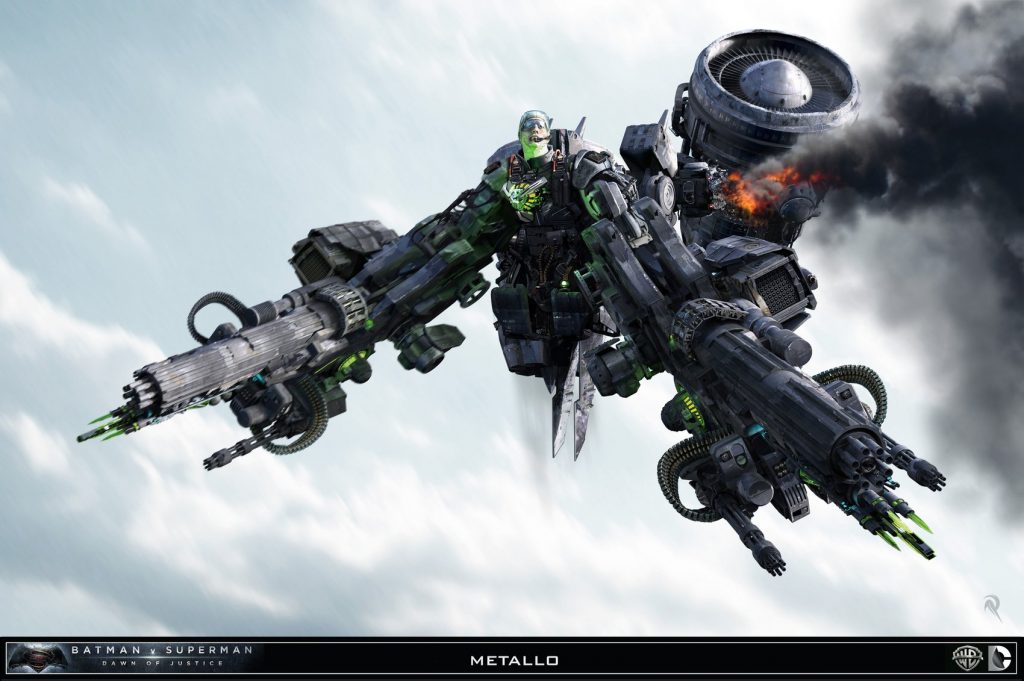
That original Entertainment Weekly article mentions Metallo as the villain discussed for the second Superman movie, a Kryptonite-powered cyborg antagonist from the comics, frequently shown as developed by Lex Luthor. In early 2020, this was corroborated by a very speculative forum post of some early BvS concept art for the conception of the character, who appears to eventually have been retooled into the wheelchair-bound bomber of Congress in the final version of the film, William Keefe:
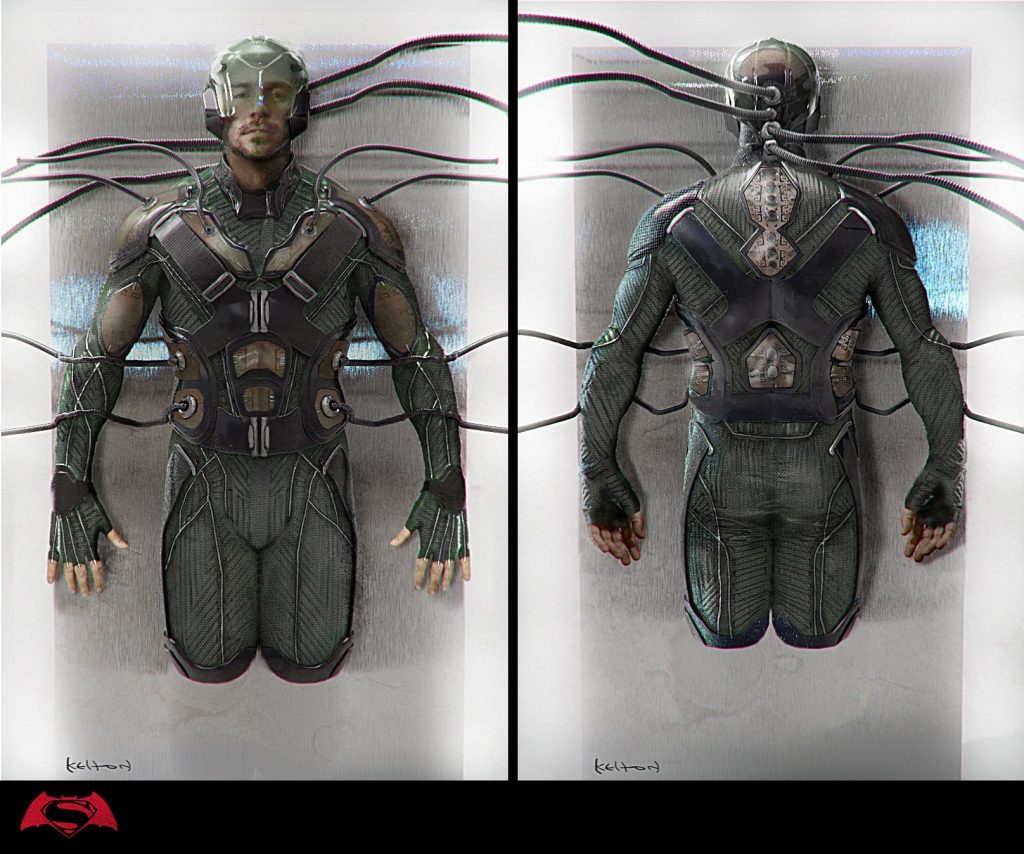
Since the release of Zack Snyder’s Justice League, a May 2021 Den of Geek article covered an interview with Zack Snyder in which he discusses debuting Brainiac on the big screen as the antagonist in his initial concepts as well as kicking around the idea of the return Faora and some of the other characters sent to the Phantom Zone at the end of the DCEU debut movie.
Regardless of the specific plans for Man of Steel 2 and how they might change in memory over the years, it’s at the very least clear that, initially, Snyder and his team were considering the movie that remains forever missing from the DCEU: a decent Man of Steel sequel that believes in, and cements the audience’s belief in, the character of this incarnation of Superman. And doesn’t kill him already: the presence of Doomsday in trailers clearly signaled the Death of Superman to comics fans. Already. In the character’s second movie.
The sheer haste–the Batman team-up concept and the apparently subsequent addition of Doomsday and Wonder Woman–being pushed into production for DCEU Chapter #2 is a fault that has sporadically been placed at the feet of Zack Snyder over the years, but I feel that attribution has been used to scapegoat Snyder for the rushed approach the the overall DC connected universe. Looking to a (now removed and archived) Entertainment Weekly preview article for Batman V Superman, you find a much more reasonable suggestion for connecting the franchises, akin the the post-credit teases the MCU so effectively used to connect a serial narrative out of their early episodic origin story movies:
Zack Snyder recalls the first time he pitched the idea, in a meeting with franchise co-captains Christopher Nolan and David S. Goyer, it was only meant as an Easter egg. “I said, ‘What about at the end of the movie we do a scene where there’s a crate full of kryptonite delivered to Wayne Manor,’” says Snyder. “Everyone was like…‘Okaay.’ Once you say it out loud it’s a problem because you can’t unsay it.”
Keith Staskiewicz, Entertainment Weekly – This Week’s Cover: First look at Batman v Superman: Dawn of Justice‘s ultimate superhero showdown – July 2, 2015
Hidden in the quote from this 2015 EW cover story you have a distinction between the “franchise captain” model that came quickly to pass with Kevin Feige at Marvel Studios, and the “franchise co-captains” model which informed the DCEU. And there’s more support for the idea that the darker, “real world” approach of Man of Steel was a logical extension of the very successful dark and gritty Dark Knight trilogy, given Christopher Nolan’s direct involvement in the role of producer and writer. But we’re still not to the bottom of who decided that DC second cinematic outing would be a team-up with Batman and a run-up to Justice League, instead of focusing on becoming a much-needed follow-up to Man of Steel.
Even “franchise captains” have their bosses as well: studio and parent company CEO’s. In 2015, following the acquisition of Marvel by Disney, head of Marvel Studios Kevin Feige found his life a lot easier when he was removed from under the command of Ike Perlmutter, CEO of Marvel Entertainment, and directed instead to report to Disney studio boss Alan Horn, as reported by Screenrant. Coming just before the release of Civil War, this change freed Feige to continue to develop both the diversity and the success of the Marvel Cinematic Universe with less turmoil and oversight.
Horn, as it happens, had his own happy ending, as his tenure at Disney started after leaving Warner Brothers when, perhaps not coincidentally after the release of Green Lantern and Superman Returns, there was a big shake-up of executives culminating in a new regime… one that would shepherd in their own new attempt at a DC Universe adaptation, under new Warner Brothers studios CEO Kevin Tsujihara:
Many top industry executives believe the troubles with BvS are the latest sign of the instability created when Time Warner chairman and CEO Jeff Bewkes ousted Alan Horn as president in 2011. That set the stage for the infamous executive bake-off and the exit of Jeff Robinov, then head of the successful film group.
Ultimately, Bewkes promoted Tsujihara to the top Warners job and created a committee to run the film studio that includes president Greg Silverman and marketing and distribution chief Sue Kroll. It’s fair to say things haven’t gone so well since. (Warners’ loss was Disney’s gain, with Horn presiding over that studio as it has become dominant.)
Kim Masters, The Hollywood Reporter – Warner Bros. Mulls Releasing Fewer Films as ‘Batman v. Superman’ Stalls – April 6, 2016
Kevin Tsujihara took over his role as CEO of Warner Brothers in March of 2013, too late to influence the development of Man of Steel, but just in time to alter existing DC film plans, with plenty of time to take ownership of the results of Batman V Superman: Dawn of Justice in 2016. Tsujihara’s tenure as CEO would in fact last all the way until 2019, when, as Variety reports, he would be forced to step down after it was revealed he was conducting an extramartital affair with a young British actress who would be accused of trying to leverage the relationship for favoritism in casting decisions.
But is Kevin Tsujihara responsible for the haste that hurt the heroes, and rolled so many of them out into the Justice League movie before they each had a proper introduction in their own film? Have I found my culprit?
Certainly the timing lines up. Man of Steel was released on June 13, 2013, and the inclusion of Batman in its follow-up was announced a mere month and a week later, as pointed out in that Den of Geek article. More insights have been released by BvS and Justice League co-writer Chris Terrio in his frank interview with Vanity Fair. He details the executive decision-making plotting out the DCEU’s serial story-line:
Tsujihara, as far as I can tell, and the brass at the very top, decided the order of the films. I was not consulted on the order of the films, even though I was the person writing Justice League. They just determined that it was going to be Batman/Superman, and then Wonder Woman, then Justice League, and then Aquaman. So there was never any thought to how the world was constructed before they issued this edict. They said, “Conform to this schedule.”
Chris Terrio – Vanity Fair Interview – April 8, 2021
So there it is, clear as day. There was no thought put to the long-term story-line of the DC Cinematic Extended Universe when these movies were scheduled by either Kevin Tsujihara, or internal marketing leadership as directed by Kevin Tsujihara.
Tsujihara was caught unaware that the medium had shifted from an episodic to a serial story format. Proper development of a serialized story-line was not the deciding factor that determined which movie would be released at which time. Instead, a rush to enjoy the profits of an Avengers-like team-up movie would drive the scheduling at WB, whom would then proceed slotting titles… products… into a release schedule. The FACT that these products would have to become chapters in a single coherent story-line was the grunt-work for the writers to figure out. And if you didn’t like what they were doing there were always plenty of good ones available and willing to come in mercenary-style, apparently, as Terrio himself was on BvS.
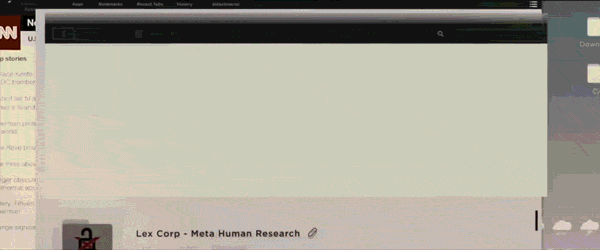
I’ve lamented before about the awkward ham-handed nature of the “Metahuman Thesis” in Batman V Superman, and how it breaks the plot of that movie and the character of Lex Luthor, and poorly introduces the rest of the heroes of the Justice League itself in a rushed fashion. Running up the the release of the movie, The Hollywood Reporter considered the implications of the process of catch-up in ‘Green Lantern’ Revisited: The Last Time Warner Bros. Tried to Launch a Comic Book Universe.
The fact that Batman v. Superman has been clearly advertised as “the start of the DC Cinematic Universe” — to the point where it was promoted in a TV special titled The Dawn of the Justice League — feels important, as well; displaying both an awareness that Warners is playing catch-up and an indicator that there’s a plan in place for the audience to trust in.
Graeme McMillan, Hollywood Reporter – “‘Green Lantern’ Revisited: The Last Time Warner Bros. Tried to Launch a Comic Book Universe” – March 22, 2016
If there WAS to be a plan, for how the release schedule of these various titles would be assembled into the chapters of a long-term overarching story, it was an afterthought left for the creatives to address. Turns out the only awareness displayed was the one about playing catch-up.
Perhaps the most satisfying thing about this revelation is it finally puts blame where it belongs. For years, casual moviegoers have had the mistaken perception of Zack Snyder as some sort of guiding figure laying out the future of the DCEU, an equivalent producer figure to Kevin Feige with Marvel Studios. But his role was really much more of collaborative director/producer, and eventually a “fall guy” the much-less-public executives could allow the public to perceive as the auteur of the abbreviated launch of the cast of DCEU heroes, should the effort fail.
And fail it did, at least in the eyes of Tsujihara and WB. Despite a worldwide box office of almost $875 million, Warner Brothers allowed news of its huge marketing spend and the studio’s subsequent disappointment with the results of Batman V Superman: Dawn of Justice to reach the public. Captain America: Civil War, the movie’s primary MCU competitor that summer, achieved better surprise-team-up results with a story-line that, by virtue of its much longer multi-chapter setup among other factors, built to a much greater box-office haul of over $1.1 billion.
Warner Brothers, instead, could have been clear in the press conversation that the second chapter of their extended cinematic universe pleased them greatly when compared against Iron Man 2’s $623 million, which also happened to introduce the character of Black Widow. This is itself a generous comparison since the “true” second movie in the MCU was Universal’s disappointing The Incredible Hulk. But of course WB had to own their extensive marketing spend and level of hype for the movie, to audiences and likely to investors as well.
So instead, the scuttlebutt about this movie, like each early movie in the DC Extended Universe, amounted to a tale of studio disappointment in results. Because the new head of a rotating cadre of studio management at WB continued to view each movie as a super-hero-movie product, rather than a chapter in an ongoing super-hero-movie story-line, they compared their early DCEU chapters against the more established MCU later chapters, or the second two Dark Knight movies, or even the thirty-year-old inflation-adjusted proceeds of the original Superman and Batman movies.
Perhaps Kevin Feige’s and Marvel Studios’ most effective strength was spending the right amount on each individual title against its possible earnings; WB swung for the fences with each early DCEU film and seemed to expect the cumulative revenue of the five movies Marvel had released in the meantime with each of their releases.
Advertisement

One thought on “Infinite Injustice: Why it’s Impossible to #RestoretheSnyderVerse”